
Courtesy of Kettle’s Yard.
If you’ve heard the name William Staite Murray, you probably know it for art pottery. And I mean ART pottery. As eminent contemporary potter Julian Stair stated, Staite Murray “positioned himself as an artist who made pots”. Thus, each pot he made was deemed a work of art – long before Grayson Perry. In a BBC interview with his friend the artist John Piper, Staite Murray stated “Pottery stands between painting & sculpture in the plastic arts, it inclines to either and includes both”. His work can thus be considered as the apotheosis of studio pottery, and the diametric opposite of Bernard Leach and his school, which focused on functionality. Much has been written about Staite Murray’s art pottery, but little has been written about his many notable achievements in painting. Earlier this year I acquired a signed oil on canvas painting by Staite Murray (below), so began to look into it.
William Staite Murray was born in 1881 and, whilst still at school, studied art with his cousins who were two professional painters who occasionally exhibited at the Royal Academy. He began taking pottery classes at the Camberwell School of Art in 1909 and also continued to draw and paint. From 1915-19, he worked with the Vorticist artist Cuthbert Hamilton at his Yeoman Pottery, producing both pottery and paintings. In 1919, he founded his own pottery and joined the Arts League of Service, whose members included Edward Wadsworth and Paul Nash, and he exhibited regularly with Cedric Morris and Frank Dobson. Staite Murray’s first major exhibition was at William Bell Paterson’s gallery in Old Bond Street, London, in 1924. From that point on, his work pioneered the movement for including pottery as part of the canon of art, with his paintings being similarly widely exhibited and being considered similarly progressive.
In 1925, his painted and potted work was included in an exhibition alongside work by Paul Nash, Jacob Epstein and Winifred Nicholson, and he became closely associated with many great artists of the day from then on. A year later, he was appointed Tutor in the newly formed Pottery department at the Royal College of Art and taught extensively into the late 1930s. As such, he became an influential educator too, with notable pupils including Sam Haile, Henry Hammond, and Emma Smith Gillies.
In 1927, his reputation had risen to the extent that Ben Nicholson proposed he join the influential ‘Seven and Five Society’, which had been created in 1919. Other members included Ben & Winifred Nicholson, Christopher Wood, Henry Moore and Barbara Hepworth. Staite Murray was accepted into the group and subsequently exhibited at all their remaining shows, joined the hanging committee in 1931, and became Honorary Treasurer in 1935.
In 1930, he exhibited at the prestigious Lefevre Gallery, in an exhibition entitled ‘Pottery, Paintings & Furniture’. His potted, painted and etched work received critical acclaim in newspapers and reviews during the 1920s & 30s, including from important critics such as Herbert Read, Roger Fry, and Geoffrey Grigson.
He arguably reached the height of his career and importance during the 1930s, working within a circle of the nation’s top artists, but his life changed diametrically when he went to visit relatives in Rhodesia in 1939. The outbreak of World War Two left him stranded there and, despite a brief trip back to England around 1957 to gather his property and hold a final exhibition there, his career was arguably over and he died in Rhodesia in 1962.
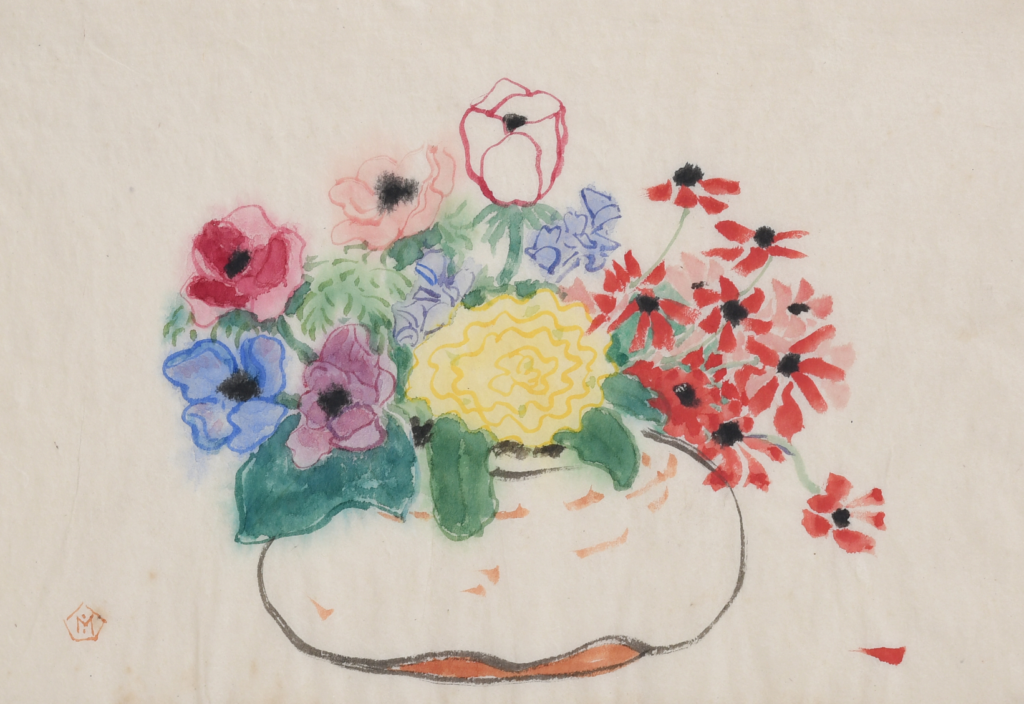
Since then, understanding of his progressive, highly important contributions to the inter-war British art scene has risen dramatically, but has focused firmly on his pottery which can fetch anything from mid-hundreds of pounds to tens of thousands of pounds today. As a result, his painted art – currently – sells for considerably less.
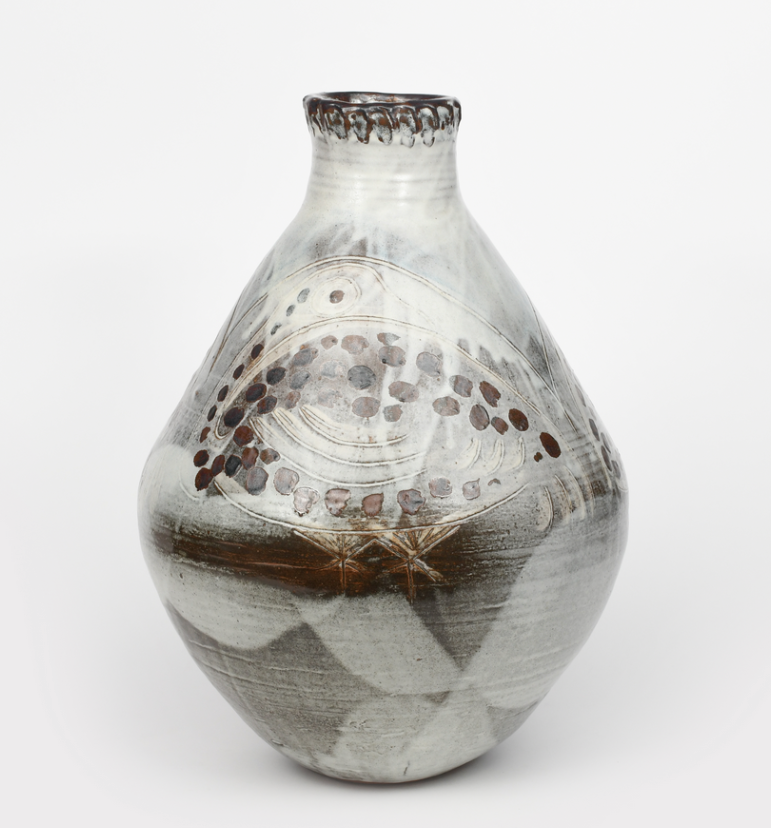
Unlike his pots, Staite Murray didn’t often sign his paintings. This means that paintings that can be firmly attributed to him are very few and far between. Scanning through an online auction catalogue earlier this year, I spotted an appealing work bearing a painted version of the impressed pentagonal seal mark he used on his pottery. It was titled with an ‘interesting’ variant of his unusual surnames, because the auctioneers had read a biro inscription on the back of the frame, no doubt written on by a previous owner based on writing down what they thought someone had said to them. As such, and as the seal mark hadn’t been recognised, it fell completely ‘under the radar’. Recognising the mark and liking the painting, I was delighted to be able to buy it and add it to my collection.

It’s an oil on canvas, with the canvas being supplied and stamped on the reverse by Newman of Soho Square, London. James Newman (founded 1801) was best known for his colours, which were used by a raft of eminent painters, including John Constable, Richard Cosway, Richard Wilson, A.N.W. Pugin, and J.W.M Turner. More in Staite Murray’s time period, Newman also supplied Dora Carrington, Frances Hodgkins, Joaquin Sorolla, Edward Bawden, and Paul Nash. As there is no ‘Ltd’ after Newman’s name in the stamp, this canvas was probably supplied before 1933, when ‘Ltd’ was added to his company name. The gilt frame is stunning, and clearly of high quality, indicating that it must have been originally sold in a high end gallery.
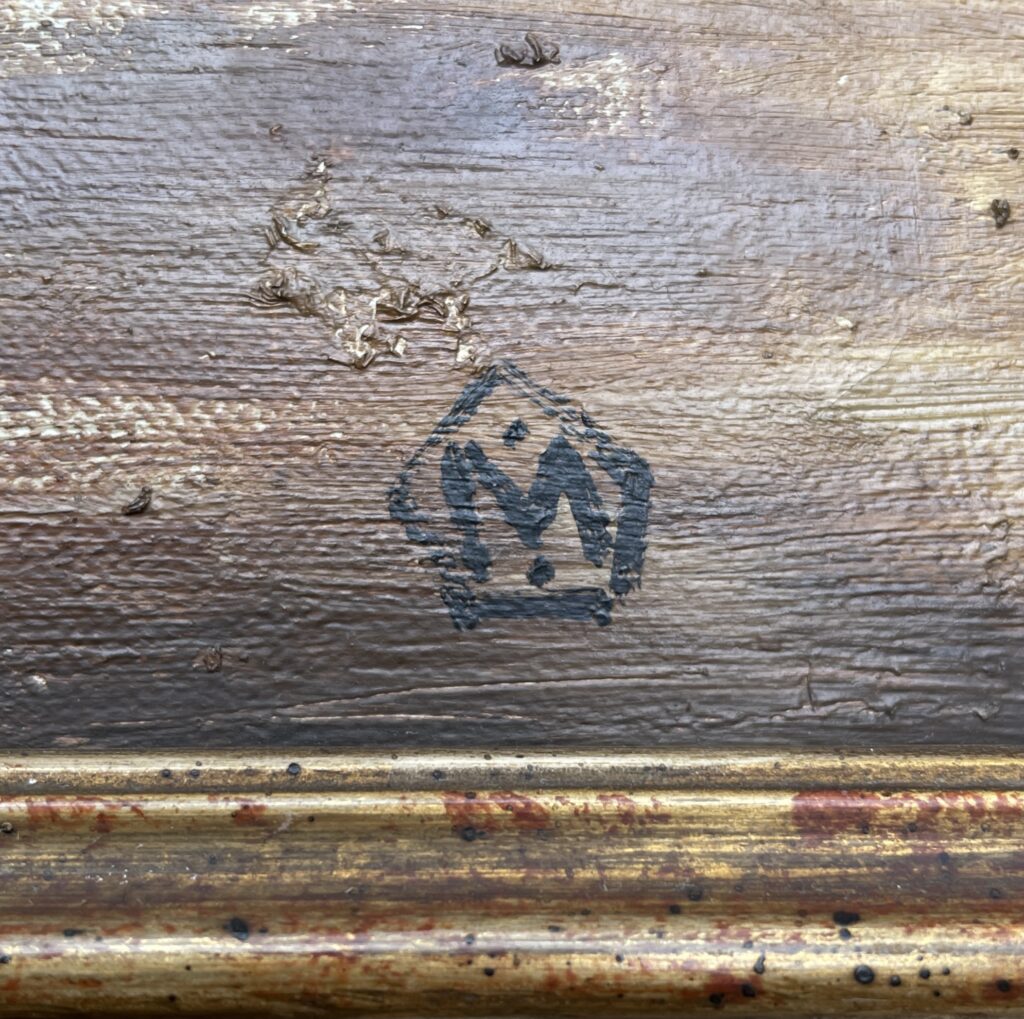
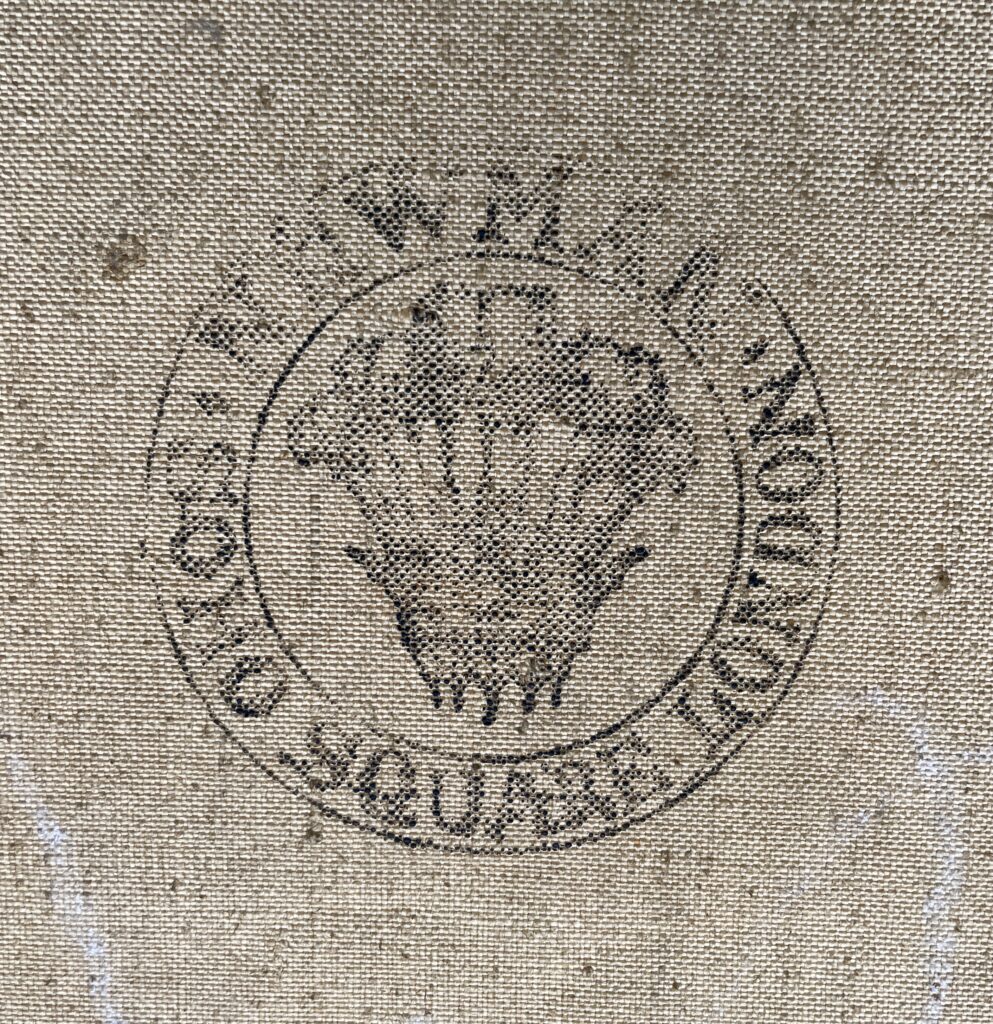
So where are his other paintings? The wonderful York Art Gallery has an abstract Modernist oil and graphite on linen (above), titled ‘Action & Inaction’ (1933-36), together with one of the best collections of his art pottery on public display. A couple of similar abstract works went unsold at Christie’s in 2006. An watercolour on paper of vases and geometric forms (below) bearing similarities to the work of his friend and colleague Ben Nicholson also went unsold at Bonhams in 2013. Etchings and simple watercolours (often of flowers) crop up at auction, usually selling for £120 to mid-hundreds of pounds. Staite Murray’s own collection of paintings and pots that he brought to Rhodesia around 1957 (and also made there) are currently in Sydney, Australia, having been inherited by the daughter of a distant descendent. You can read more about them by clicking here.

My next task will be to leaf through catalogues from the galleries who sold his work, including W.B. Paterson, Zwemmer, Lefevre, Leicester, and Redfern. Due to the likely date it was painted, there’s a strong chance that my painting was part of an exhibition put on by the legendary ‘Seven and Five Society’.

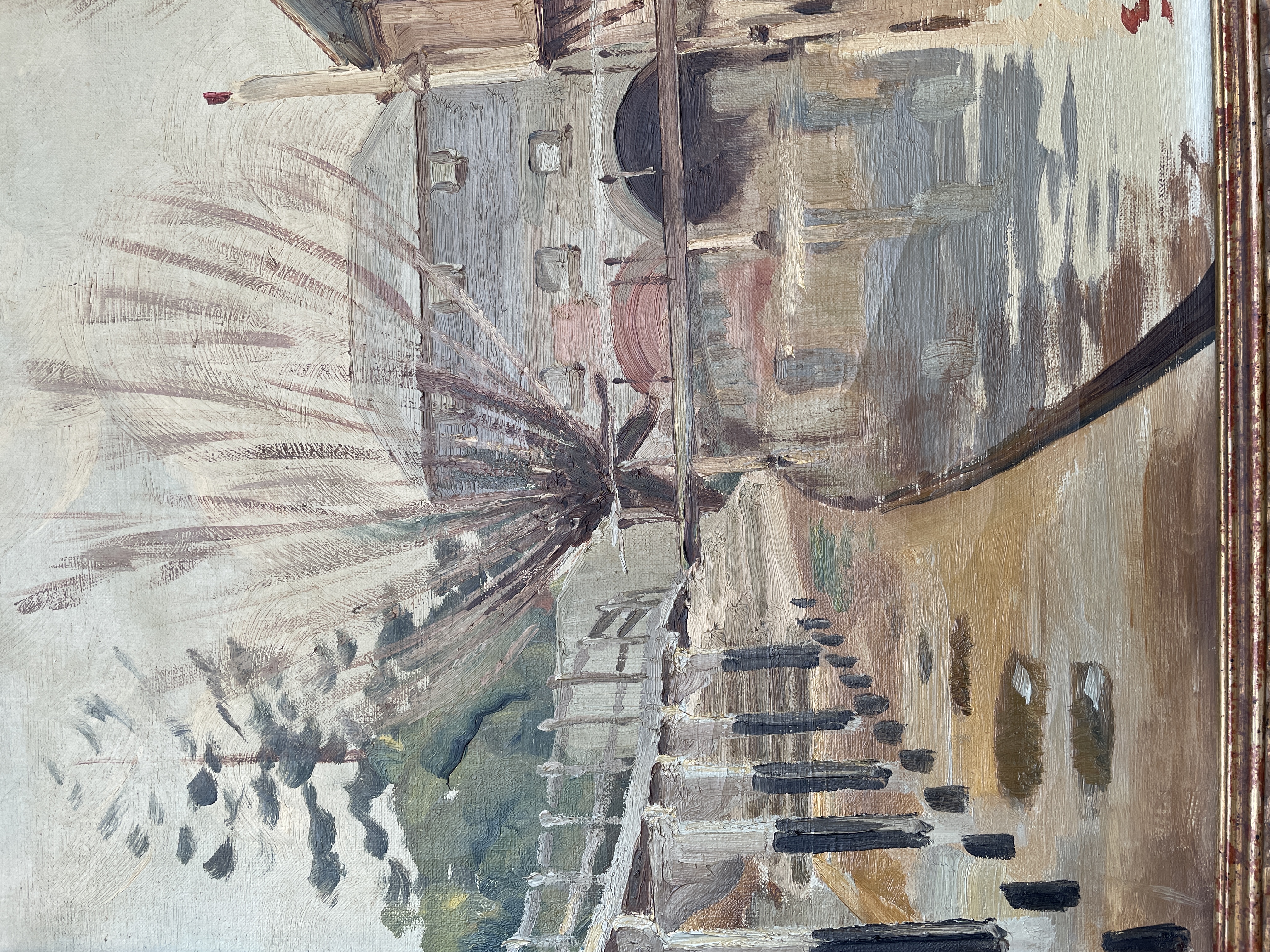

I’d also like to know where the scene of a tree-lined canal and warehouse or factory is – Camden maybe? Or is it outside London? The brushstrokes of the branches are light and expressive, and the colour and style fit in with Modern British art of the day and are almost Impressionist. I love a good research project, especially one connected to a good piece of art by a good name. But if anyone has any information that they would like to share, please let me know by clicking here.
Resources
William Staite Murray’s personal collection of art and pottery in Australia – click here.
‘Factive Plasticity – The Abstract Pottery of William Staite Murray‘, by Julian Stair – click here.
York Art Gallery
Kettle’s Yard
William Staite Murray works on Art UK
With thanks to Woolley & Wallis, Bonhams, York Art Gallery, Art UK and Kettle’s Yard for use of the images.

